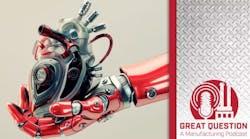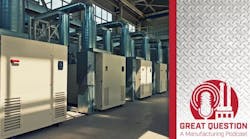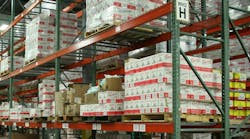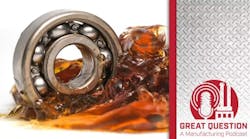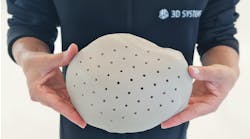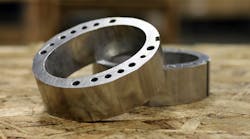The current state of manufacturing is wide open: open to new materials and design methods, and open to unconventional production and treatment technologies. Powder metallurgy is frequently the source of metal alloys customized for particular product applications, and as a result the cause of various new production practices.
Powder metal is not unknown in forging operations: "powder forging" is a sintering process in which loose alloy material is placed in a mold and compressed, or densified, by mechanical force, then quickly charged with an electromagnetic pulse. It’s a high-speed, high-volume operation well suited to small, engineered parts, like con rods.
Powder metal plays a role in some additive manufacturing and isostatic pressing operations too, some of which compete with or parallel forging activities.
As in most manufacturing processes, porosity is inherent to powder metallurgy. "Porosity" is the term for fissures and/or cavities that remain within a part after it is formed, and those cavities will remain unless subsequent treatment is applied, like sealing or impregnation. Note, that porosities generally are considered defects only if they degrade the value or undermine the performance of a part. For example, if cavities are interconnected they may create a leak path that can affect the part's structural integrity and performance.
Vacuum impregnation seals porosity and leak paths by filling the pores with a sealant under pressure. Sealant, process, and equipment can be matched to suit the operation or the products, to stop fluids or gases from leaking under pressure. Here are four primary reasons vacuum impregnation is used to seal powder metallurgy leak paths.
1. Preventing fluids or gases from leaking under pressure. If the leak paths are not sealed, then fluids or gases may leak from the part. Vacuum impregnation prevents fluids or gases from leaking by sealing the porosity and leak paths. The process does this without changing the powder metal component’s dimensional or functional characteristics.
2. Reduce corrosion. Plating operations submerge the parts in acid solutions. The residual acid can seep into the porosity, which causes corrosion. Sealing the components before plating eliminates the risk of internal corrosion.
3. Improve machinability. Secondary machine operations, such as drilling, tapping, or cutting, are impaired as the voids between the particles cause tool chatter, reducing tool life and degrading the finish quality. Vacuum impregnation stabilizes and supports the individual powdered metal granules during machining. This improves machinability by making it more efficient, eliminating tool chatter, and improving the machined finish.
4. Enhance surface finishing. Powder metal porosity absorbs oils, fluids, deburring fluids, pre-plating cleaners, and acids. If the porosity is not sealed, fluids may bleed out and negatively affect the finish. Sealing the porosity before secondary finishes will eliminate any failure mode that could develop from bleed out of pretreatments.
Vacuum impregnation adds value to powdered metal components. The process eliminates failure modes caused by porosity, produces pressure tight parts, improves machinability, and meets surface finish/appearance requirements.
Andy Marin is the marketing coordinator for Godfrey & Wing, a developer of vacuum impregnation technology. Contact him at [email protected].
